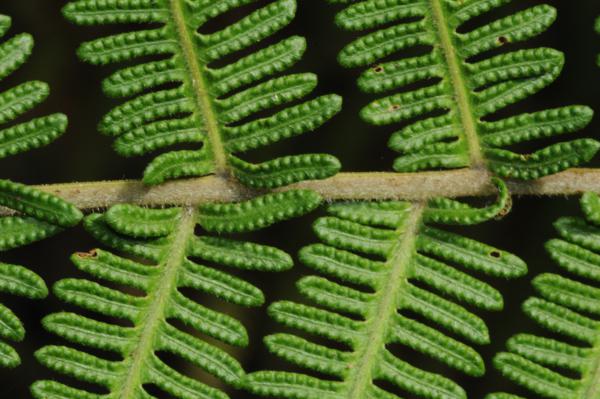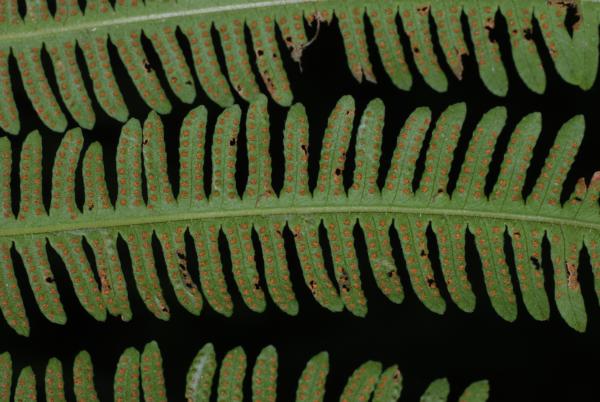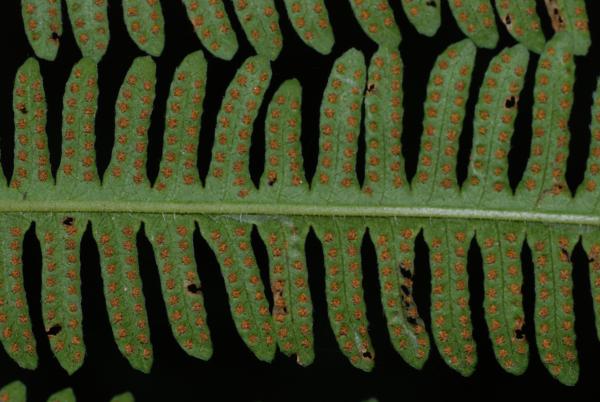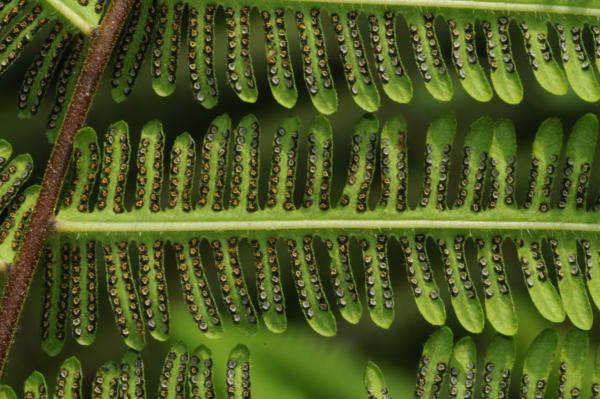
Cyclosorus immersus (Blume) S.Linds.
Family
Thelypteridaceae
Nomenclature
Cyclosorus immersus (Blume) S.Linds., Edinburgh J. Bot. 66(2): 359. 2009. – Aspidium immersum Blume, Enum. Pl. Javae: 156. 1828. – Lastrea immersa (Blume) T.Moore, Index Filic.: 89. 1857; Bedd., Handb. Ferns Brit. India: 234. 1883. – Thelypteris immersa (Blume.) Ching, Bull. Fan Mem. Inst. Biol. 6: 306. 1936; Holttum, Rev. Fl. Malaya ed. 1, 2: 243. 1955 [‘1954’]; Holttum, Dansk Bot. Ark. 20: 22. 1961; Tagawa & K.Iwats., SouthE. Asian Stud. 5: 64. 1967; Tagawa & K.Iwats., Fl. Thailand 3: 433, f. 45. 1988. – Amphineuron immersum (Blume) Holttum in B.K.Nayar & S.Kaur, Companion Handb. Ferns Brit. India: 203. 1974; Holttum, Blumea 23: 211. 1977; Holttum, Fl. Males., Ser. II, Pterid. 1: 547, f. 19e. 1982 [‘1981’]; Boonkerd & Pollawatn, Pterid. Thailand: 165, 218. 2000. – Type: Blume s.n., Java, Gaenaeng Parang, (holotype L, sheet 908,335-404; Morton photograph 1064).
Gleichenia laevissima auct. non Christ: Tardieu & C.Chr., Fl. Indo-Chine 7(2): 45. 1941, pro parte (Lao records).
Description
Rhizome short, erect, thick; scales linear, brown, up to 20 by 1.5 mm, hairy on dorsal surface as well as at margin. Stipes stramineous to pale castaneous, about 70 cm long, scaly near base, pubescent. Laminae oblong-lanceolate, pinnate, up to 120 by 60 cm, very rarely more; lateral pinnae more than 30 pairs, lower ones opposite, basal pair much reduced, lower ones linear-lanceolate, acuminate at apex, narrowing towards sessile base, 20–45 by 2–5 cm, deeply lobed to costa leaving about 1 mm below the sinus; lobes patent or a little falcate, narrowly oblong, moderately acute at apex, entire, about 15 by 3 mm; thin, papyraceous, pale green; veins pinnate, veinlets simple, more than 15 pairs, covered densely with yellow glands; costa, costules and veins hairy, hairs pale, setose, 1 mm or longer. Sori medial or closer to margin; indusia up to 0.7 mm diam., glabrous or with conspicuous yellow gland around margin at least when young, persistent .
Distribution in Thailand
NORTHERN: Lampang; EASTERN: Chaiyaphum; SOUTH-WESTERN: Kanchanaburi, Prachuap Khiri Khan; SOUTH-EASTERN: Chanthaburi; PENINSULAR: Surat Thani, Phangnga, Krabi, Nakhon Si Thammarat, Trang, Satun, Yala.
Distribution in Laos
Luang Phrabang.
Wider Distribution
Malesia, north to Hainan.
Ecology
On rather dry banks of paths in light shade to dense evergreen forests at low, or medium altitudes.
Proposed IUCN Conservation Assessment
Least Concern (LC). This species is widespread and not under any known threat.
Voucher specimens - Thailand
Middleton et al. 4333, Surat Thani, Khlong Phanom National Park (E); Charoenphol et al. 3572, Trang, Khao Chong (E); Charoenphol et al. 4098, Yala (E).
Voucher specimens - Laos
Poilane 20250, Luang Phrabang, Phon Phung (P).
Habit
Habit
Habit
Frond
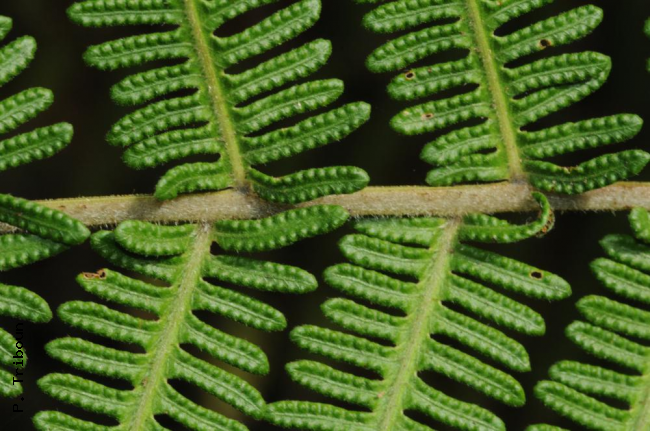
Upper surface of lamina
Lower surface of pinna
Lower surface of pinna
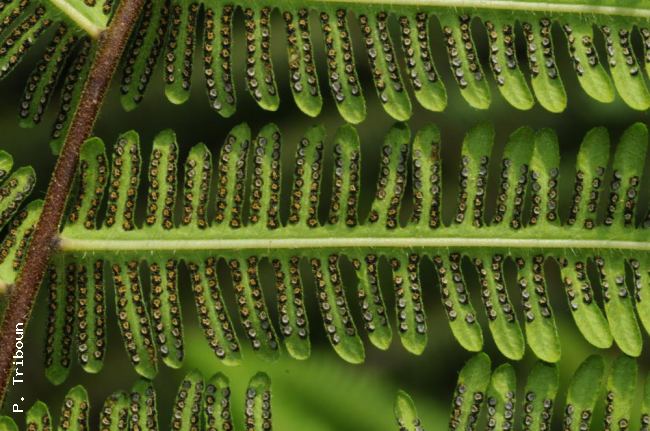
Sori
Site hosted by the Royal Botanic Garden Edinburgh. Content managed by Stuart Lindsay, Gardens by the Bay, Singapore and David Middleton, Singapore Botanic Gardens. Last updated 24 January 2012
_PK_9522_sml.JPG)
_PK_9526_sml.JPG)
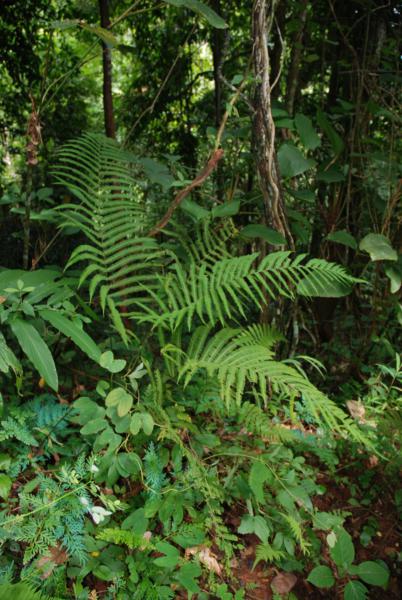
_PK_9527_sml.JPG)
